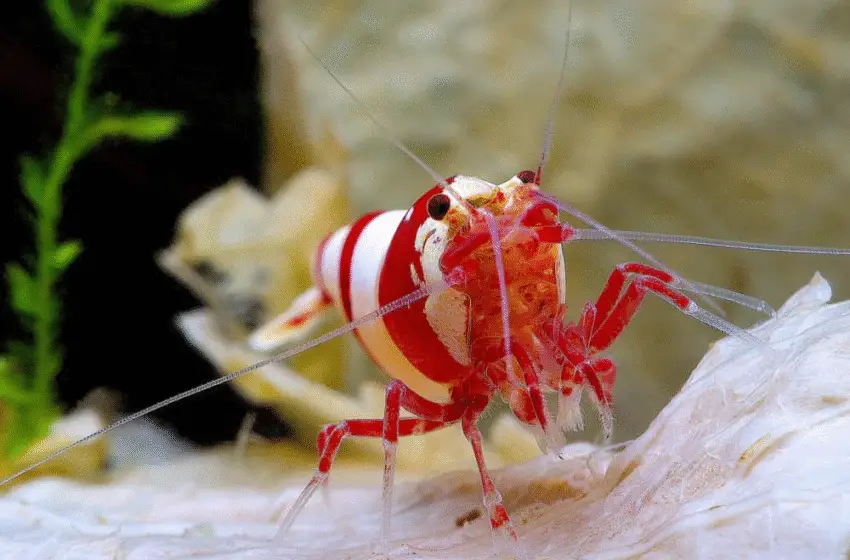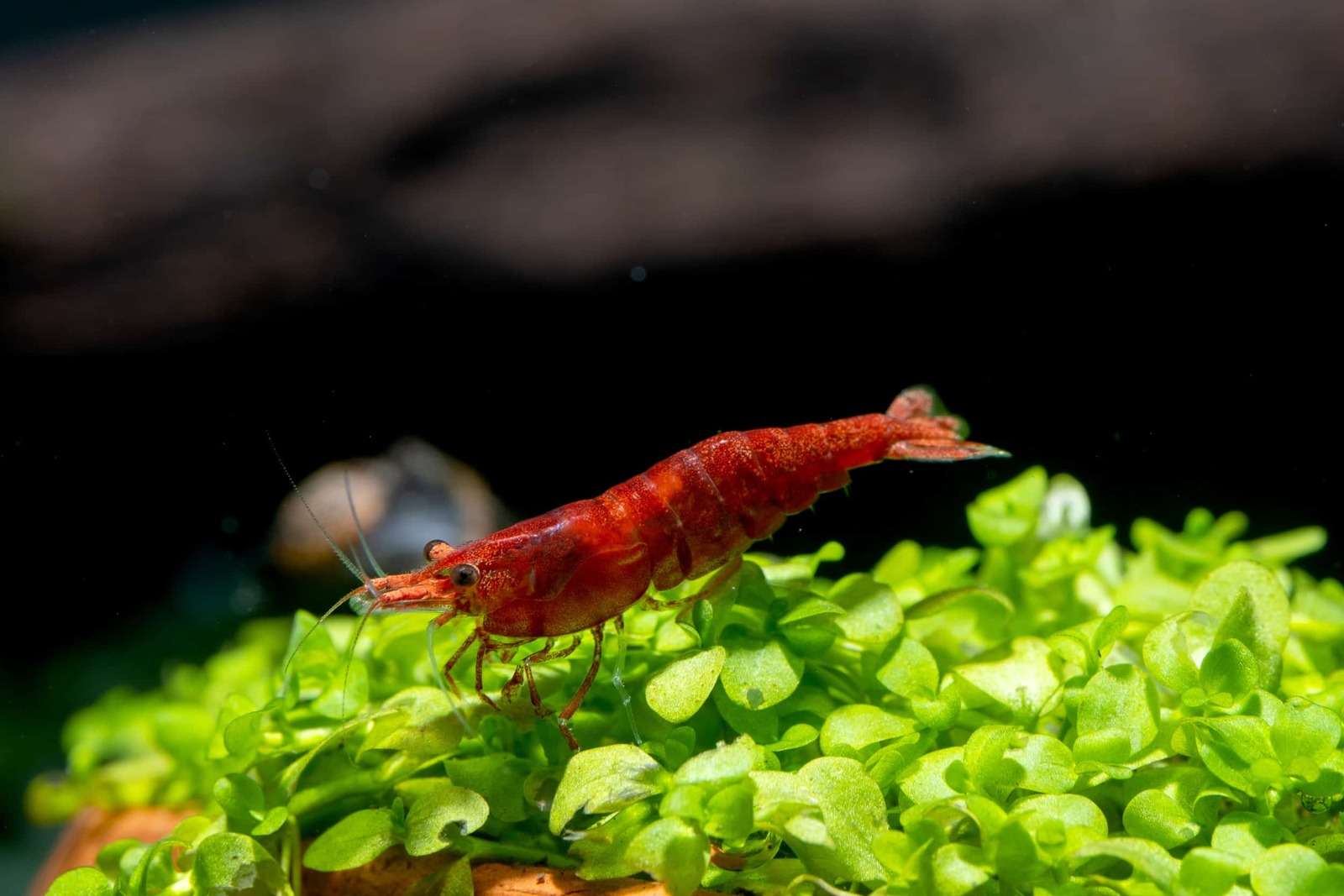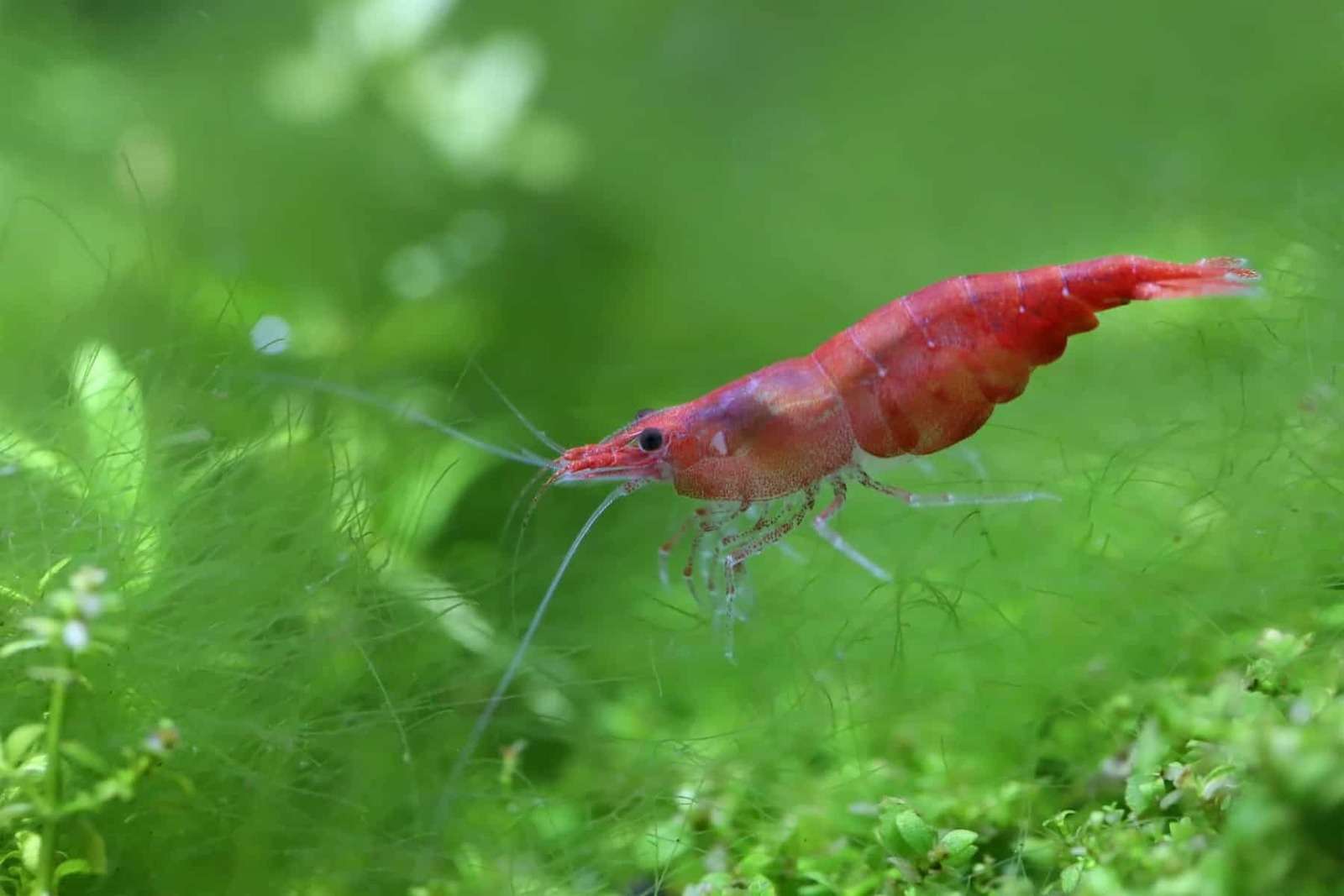How Fast Do Cherry Shrimp Breed

How Fast Do Cherry Shrimp Breed
Introduction
Cherry Shrimp Breeding: Cherry shrimp, known for their vibrant red coloration and peaceful nature, have become a beloved addition to freshwater aquariums around the world. One of the most fascinating aspects of keeping cherry shrimp is their remarkable breeding ability. These small, aquatic invertebrates can reproduce at an astonishing rate, making them an attractive choice for aquarists interested in witnessing the joys of natural propagation within cherry shrimp tanks.
Understanding the breeding habits of cherry shrimp is essential for both novice and experienced aquarists. This knowledge empowers hobbyists to create optimal conditions for breeding and helps maintain a thriving shrimp population within their aquariums.
In this exploration of cherry shrimp breeding, we will delve into the factors that contribute to their prolific reproduction, the ideal conditions to encourage breeding, and the growth stages of the young shrimp. From the intricacies of their mating rituals to the nurturing behavior of the mothers.
As we venture deeper into this topic, we’ll uncover the answers to essential questions, such as “How fast do cherry shrimp breed?” and “What are the signs of a pregnant female?” Whether you’re a curious beginner or a seasoned shrimp keeper, this comprehensive overview of cherry shrimp breeding will provide valuable insights into this captivating natural phenomenon.

How long does it take cherry shrimp to breed?
It takes about three months for a shrimp to mature into an adult capable of reproducing itself.
Cherry shrimp breed quickly, taking 4 to 6 weeks for a female to give birth after being inseminated. This relatively short gestation period is one of the reasons these shrimp are renowned for their prolific breeding habits.
Once a female becomes “berried,” meaning she carries fertilized eggs under her abdomen, it usually takes about 2-3 weeks for the eggs to develop into tiny shrimp embryos. The final stage, hatching, occurs in another 1-2 weeks, after which the baby shrimp are released into the aquarium.
The exact timing can be influenced by several factors, including water temperature, water quality, and the specific genetics of the shrimp. Warmer water temperatures tend to accelerate the breeding process, while cooler temperatures can slow it down.
Aquarists can make cherry shrimp breed faster by keeping their tank conditions stable. This ensures that there are always new generations of shrimp in the aquarium. This fast reproductive cycle is one reason why cherry shrimp are popular with aquarium enthusiasts.
How many cherry shrimp do you need to start breeding?
10
If you plan on starting a breeding colony, get at least 10 Neocaridina shrimp. This number should guarantee you have both males and females. That being said, do not only pick the biggest, most colorful shrimp at the store because they might all be females or might be too old to breed for much longer.
To start breeding cherry shrimp successfully, you can begin with as few as 10 to 20 shrimp in your aquarium. These small creatures are social and thrive in a group, making it essential to establish a community for breeding. Starting with a modest number of cherry shrimp allows you to monitor and maintain water quality, as overcrowding can lead to stress and decreased breeding rates.
Cherry shrimp breed quickly in the right conditions. For optimal breeding, the water in your tank must be stable, with the right temperature, pH levels, and water quality. Giving them hiding spaces and a balanced diet of shrimp food and veggies helps their health and breeding. As your colony grows, you’ll see more breeding and females carrying eggs. With care and patience, a group of 10-20 cherry shrimp can become a self-sustaining population in your aquarium.
How fast do cherry shrimp eggs hatch?
If a berried shrimp is stressed by predators or poor water conditions she may also abandon the eggs. They have 20–30 eggs, which take 2–3 weeks to hatch. The eggs are green or yellow, depending on the color of the saddle. They turn darker and darker until the young shrimp hatch after about three weeks.
Cherry shrimp eggs typically hatch relatively quickly, usually within 18 to 21 days after the female shrimp becomes “berried” (meaning she carries fertilized eggs under her abdomen). The precise timing can vary based on environmental conditions, with factors like water temperature and water quality playing a significant role.
Warmer water temperatures tend to expedite the hatching process, while cooler temperatures may slow it down. In an aquarium maintained at around 78-80°F (25-27°C), which is an optimal temperature range for cherry shrimp, the eggs are likely to hatch closer to the 18-day mark. However, if the water is cooler, it might take a few days longer for the eggs to hatch.
The eggs hatch and small, clear baby shrimp come out. They start to look around and eat tiny living things and plants. These little shrimp are weak, so they need places to hide and lots of food to grow well.
Cherry shrimp breeders enjoy watching the hatching stage. They find it interesting and satisfying. This stage is the start of new life in the aquarium. It also makes keeping these colorful and active creatures more delightful.
Do cherry shrimp breed easily?
It is actually fairly simple to breed Red Cherry Shrimp in the home aquarium if one pays attention to three major steps: 1) Inducing breeding, 2) Ensuring health and comfort while carrying the eggs, and 3) Raising the young. Inducing breeding can be done by keeping the water conditions stable.
Cherry shrimp are known for breeding easily, and this is one of the primary reasons they have become a popular choice among aquarium enthusiasts. Their prolific breeding habits make them an attractive option for both novice and experienced aquarists.
Cherry shrimp, a type of dwarf shrimp, have relatively simple requirements for breeding success. They are adaptable to a wide range of water parameters, which means they can thrive in various aquarium setups. To encourage breeding, maintaining stable water conditions with appropriate temperature, pH, and water quality is crucial. These shrimp are known to reproduce readily when provided with suitable conditions.
Mating among cherry shrimp is a natural process, and it doesn’t require special intervention. Once a female shrimp becomes receptive to mating and is inseminated by a male, she will carry fertilized eggs under her abdomen until they hatch. This entire process occurs within the aquarium environment.
Cherry shrimp are easy to breed because they are strong and adaptable. They are great for people who want to keep a self-sustaining population of these pretty freshwater creatures in their tanks. They reproduce quickly and can turn a small group into a big colony in a short amount of time. This can bring joy to those who love nature and aquariums.
Do cherry shrimp breed in tank?
Some shrimp, such as cherry shrimp, are extremely easy to breed in aquariums. But others, such as amano shrimp, are much harder.
Cherry shrimp do breed in a tank, and they are known for their prolific breeding in aquarium environments. When provided with the right conditions, cherry shrimp will readily engage in mating and produce offspring within the confines of the tank.
Cherry shrimp are known to be highly adaptable to captive conditions, and they can thrive in a well-maintained aquarium. To encourage breeding, it is essential to ensure that the tank provides stable water parameters, suitable temperature, and good water quality. These conditions mimic their natural habitat, which is crucial for successful breeding.
In a tank, cherry shrimp will engage in their natural courtship and mating behaviors. Once a female shrimp is inseminated by a male, she carries the fertilized eggs under her abdomen until they hatch. This entire breeding process occurs within the controlled environment of the aquarium.
Cherry shrimp breeding is easy and popular for both new and experienced aquarium owners. Watching their breeding stages is fun and educational. Cherry shrimp show how amazing aquatic life can be in a well-kept tank.
What is the easiest shrimp to breed?
Red Cherry shrimp (Neocaridina davidi var.
The Red Cherry shrimp is probably the most popular dwarf shrimp among both beginners and more experienced shrimp keepers. And for good reason! This red Neocaridina variety is not fussy about water values, very easy to breed and quite decorative.
The easiest shrimp to breed in aquariums are typically the Neocaridina species, commonly known as cherry shrimp. These hardy and adaptable crustaceans are favored by both beginners and experienced hobbyists for their relatively simple breeding requirements. Cherry shrimp come in various colors, including red, orange, yellow, and even blue, making them a popular choice among enthusiasts.
Cherry shrimp thrive in a wide range of water parameters, tolerating a slightly broader spectrum compared to more sensitive shrimp species. They are also less demanding in terms of water quality, which means they can adapt to a variety of aquarium setups. Additionally, they are omnivores and readily consume a diverse diet, including algae, biofilm, and commercial shrimp pellets.
Their breeding process is straightforward, with females carrying eggs for about 3-4 weeks before releasing miniature versions of themselves into the tank. The survival rate of cherry shrimp juveniles is relatively high, provided there are sufficient hiding places and a stable environment.
Overall, the Neocaridina species, particularly the cherry shrimp variants, are considered the easiest shrimp to breed in aquariums due to their resilience, adaptability, and straightforward reproductive behavior. This makes them an excellent choice for beginners looking to venture into shrimp breeding.
Can cherry shrimp breeding become overwhelming?
Breeding cherry shrimp can indeed become overwhelming if not managed carefully. These prolific little creatures have the potential to reproduce rapidly under favorable conditions. A single female can produce up to 30-40 eggs every few weeks, and with a survival rate of approximately 70-80%, the population can quickly multiply.
Without proper population control measures, a tank can become overcrowded, leading to issues such as limited resources, increased competition for food, and potential stress on the shrimp. Overpopulation may also result in a decline in water quality, as waste production escalates.
Maintaining a balanced and sustainable population requires strategic planning. This can involve separating adult shrimp from the juveniles or setting up a dedicated breeding tank. Additionally, introducing natural predators or selectively culling the population can help maintain a manageable and healthy shrimp colony.
To keep cherry shrimp healthy, it’s important to check the water, give them places to hide, and feed them properly. If you take these steps, you can keep the shrimp population under control and enjoy watching them thrive.
How can I protect baby cherry shrimp from being eaten by other tank inhabitants?
To protect baby cherry shrimp from being eaten by other tank inhabitants, it’s essential to create a suitable environment that offers both hiding places and ample resources. Firstly, densely planted aquariums with live or artificial plants provide natural hiding spots for the young shrimp. Dense vegetation not only offers physical protection but also serves as a source of biofilm and microorganisms, which are crucial for their nutrition.
Consider adding fine-grained substrates like sand or gravel to the tank. This substrate allows baby shrimp to forage and seek refuge, as well as aids in the growth of microorganisms for their diet. Introducing specialized hiding spots like moss, caves, or breeding boxes can also offer additional security for the young shrimp.
Additionally, carefully select tank mates that are compatible with cherry shrimp. Avoid aggressive or predatory species that may view the young shrimp as potential prey. Opt for peaceful community fish or other shrimp-friendly invertebrates.
Regular water quality maintenance is crucial to ensure a healthy environment for the shrimp. Stable water parameters and appropriate filtration will contribute to the overall well-being and survival of the baby cherry shrimp. By taking these precautions, you can greatly increase the chances of your baby cherry shrimp thriving in their aquarium environment.

Conclusion
Cherry shrimp’s remarkable breeding speed has made them a standout species in the realm of marine aquarium keeping. Through the journey of exploring how fast cherry shrimp breed, we’ve uncovered the fascinating dynamics that govern their reproductive process.
Cherry shrimp, with their vibrant red coloration, have a penchant for prolific breeding. Given the right conditions, these tiny invertebrates can multiply at an impressive rate, sometimes even producing several generations in a single year. Their ability to adapt to various water parameters and a wide range of environments makes them a resilient and popular choice for aquarists.
Creating an environment conducive to breeding is a rewarding endeavor for aquarists, as it allows them to observe the intricate behaviors of these shrimp, from courtship rituals to the maternal care provided by the berried females. The rapidity of cherry shrimp reproduction not only adds to the charm of keeping these creatures but also makes them an excellent option for those seeking to maintain a self-sustaining shrimp population.
To understand cherry shrimp breeding, it’s crucial for those interested in them. These creatures are resilient and adaptable, thriving in captivity. They make great additions to aquariums.



